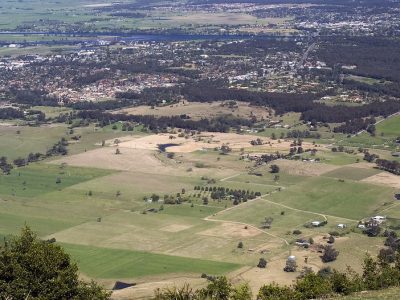Drainage Window Concept
Every now and then a paper appears that catches the eye. I feel compelled to share my enthusiasm on one such paper.
Over many years the Water Research Laboratory (WRL) of UNSW has been active in a range of estuary studies under the leadership of Will Glamore. He has been able to attract some fantastic students and colleagues who have studied various aspects of estuary dynamics. His team has published a magnificent set of eight modules on estuary management in relation to climate change (“Climate change in estuaries: State of the science & guideline for assessment”, 2019). Will and colleagues have also produced detailed drainage remediation action plans for specific NSW floodplain estuaries such as the Shoalhaven and Manning rivers, as well as assessing climate change risk in several other floodplain estuaries. Here I wish to comment on one paper which has just been produced by members of the team highlighting the PhD research of one of the students.
Kate Waddington is the lead author of a paper on “Quantifying the effects of sea level rise on estuarine drainage systems” (Waddington et al., 2020, Water Resources Research, 58, e2021WR031405, https://doi.org/10.1029/2021WR031405). This paper explores issues associated with low-lying estuarine floodplains and wetlands that have been modified by flood mitigation and drainage systems. These are systems that require protection from high tides while also allowing removal of excess catchment flows to low tide. As discussed in this paper, productive use of these lands can only be achieved under gravity when water levels in the floodplain catchment drains are higher than those in the estuary. “Changes to the tidal range and to the duration of the rising and falling tides that occur throughout estuarine waters will result in dynamic variations in the window of opportunity for gravity discharge within and between different catchments and under sea level rise (SLR)”.
In this paper the authors introduce the concept of the “drainage window” to quantify how much time is available to drain different floodplain catchments within an estuary. This enabled them to model how that window may be affected by SLR. They note that SLR “may substantially reduce the time available to drain” which in turn “may have significant impacts on the estuarine environment, including current land use management”.
Waddington et al. provide a detailed explanation of methods and assumptions used in calculating the drainage window. They note how the window duration-elevation curve can vary throughout an estuary. It can also operate differently under wet weather and flood conditions compared to dry weather periods. Under the later the window at a given site is primarily controlled by daily tidal conditions. Many minor drainage outlets are typically located above or within the upper portion of the tidal range so the window will be affected by the invert level of the outlet. However, the primary floodgates servicing the main drainage systems are located at or below the lowest tidal levels to maximise the opportunity for discharge: “the drainage window would be restricted to the falling tide, with floodgates precluding discharge as a negative hydraulic gradient develops during the rising tide”. The window is therefore defined as the height above low tide. Low-lying lands may appear to be protected from inundation by high water levels, so any reduction of the drainage window as low tide levels getter higher due to SLR increases the potential to cause extensive waterlogging in the future.
They study two floodplain estuaries in NSW: Clarence and Hastings. Using SLR scenarios they show how SLR would increase the area of impeded drainage in both estuaries. Estimates are made of the amount of land that would be unable to drain under a far-future scenario unless a pumped discharge scheme was implemented. Different characteristics of estuary morphology, area and drainage conditions produces variation in results depending to some extent on whether a future tidal range was dampened or amplified a under SLR. Maps are used to demonstrate outcomes of their analysis for both estuaries.
Despite some uncertainties that could result in complex feedback effects, Waddington et al., express confidence in the way their modelling shows that SLR is going to result in prolonged periods of reduced drainage “that are likely to lead to higher groundwater levels, soil waterlogging, and the permanent inundation of low-lying areas”. As drainage decreases there will be pressure to protect or preserve existing land uses. They recognise that SLR will have economic and social consequences. This will be further complicated by other biophysical effects such as those arising in the management of acid sulfate soils. On option is that for SLR-driven high-risk drainage areas “there may be substantial merit in considering nature-based solutions” including potential for carbon sequestration.
Application of the drainage window concept in highly urbanised areas is something that needs further consideration. For instance, around Sydney Harbour and up along the Parramatta River there are hundreds of stormwater drains. They range in type, degree of openness and at different elevations with respect to tidal levels. There has been no systematic audit; it is recognised that some are the responsibility of local councils, Sydney Water, other agencies, and even private ownership. The recent publication by Hague et al. of the Bureau of Meteorology on potential tidal inundation impacts under SLR around Sydney Harbour alerts us to the risks facing private and public assets as estuarine waters flow back up the drains at times of high astronomical tides (Hague, B. et al., 2020, “Sea level rise driving increasingly predictable coastal inundation in Sydney, Australia”. Earth’s Future, 8, e2020EF001607. https://doi.org/10.1029/2020EF001607).
Drainage efficiency will surely decline in many cases around Sydney as the window of opportunity to drain these waters declines with low tide levels rising higher and higher. In the words of Hague et al. “coastal flooding is expected to occur in Sydney on average once per week by 2050 and every day by 2100 if high greenhouse gas emissions continue”. Such events will become “very predictable”, and this changing risk will have implications for coastal and emergency managers. This work coupled with increased understanding of tidal anomalies in urban estuaries and perhaps even changes in tidal regimes with SLR requires more analysis of the significance of the concept of the drainage window.
Bruce Thom
Words by Prof Bruce Thom. Please respect the author’s thoughts and reference appropriately: (c) ACS, 2022. For correspondence about this blog post please email admin@australiancoastalsociety.org.au
#229



 Yorke Peninsula Coastal Forum
Yorke Peninsula Coastal Forum